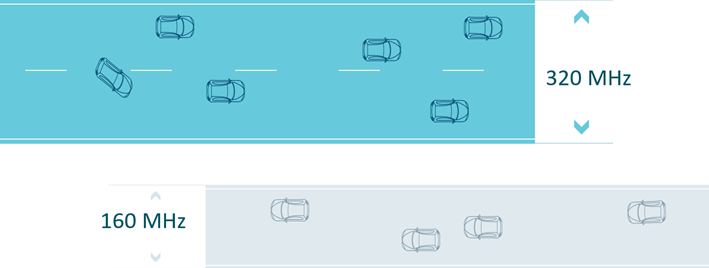320 MHz: Are WiFi 7’s Ultra-Wide 320 MHz Channels Worth It?
Upgrades to WiFi technology aren’t stopping any time soon. The same goes for WiFi channel size, which is expanding with every iteration.
During the WiFi 5 era, the 160 MHz channel was introduced for the first time, but it only supported two 160 MHz channels on the 5 GHz band. With WiFi 6, these channels can be broken up into smaller subcarriers for more efficient allocation to different devices.
Now we have WiFi 6E and its brand new 6 GHz band, which is freed from the congestion of legacy devices and can support seven 160 MHz channels at the same time.
With WiFi 7 over the horizon, the latest technology includes new ultra-wide 320 MHz channelling. So, is this upgrade just a higher number on paper? Which kind of devices would benefit the most from it? Do you really need ultra-wide WiFi 7 320 MHz channels?
Read on for the answers.
What are 320 MHz channels?
You can imagine WiFi channels as roads and the data as cars. This means 80 MHz, 160 MHz, and 320 MHz channels resemble different types of roads with 2, 4, or more lanes. The more lanes you have, the wider the road is for more cars to travel at faster speeds with fewer jams.

Whereas 80 MHz resembles a neighbourhood street and 160 MHz a 4-lane road, 320 MHz on WiFi 7 looks more like an 8-lane superhighway, allowing for more information transmission at the same time while freeing up heavier traffic.
What are the advantages of 320 MHz?
First, ultra-wide 320 MHz has a throughput that’s 4 times that of 80 MHz and 2 times that of 160 MHz. This means that WiFi 7 has doubled the transmission capacity of last-gen WiFi 6 and 6E technologies.
Second, the wider channel reduces delays and further improves the transmission rate. The maximum theoretical rate can even reach an outstanding 46 Gbps.
Third, 320 MHz channels are set on the more open 6 GHz band. This avoids the most common wireless transmission protocol bands, resulting in less interference to the signal.
Are WiFi 7’s ultra-wide 320 MHz channels right for you?
Knowing about the latest tech standard might get you excited for the future of WiFi, but it’s still important to ask yourself if you really need the latest standard. After all, the speeds offered by the previous generations of WiFi could be sufficient for many of your daily needs.
In fact, with the rapid pace of development, it might even be hard to notice the changes from one new standard to the next. But many of these little changes can still have a huge impact on your life.
Take 1080p as an example. It’s been a little over 10 years since you could stream videos of that quality. Now, you’re probably noticing 4K video is gradually becoming mainstream. Even online games today are much sharper than in the past and can accommodate more players than ever before.
With COVID-19, we’ve all seen the impact reliable and fast WiFi has while working and studying from home. Without the constant upgrades from WiFi 5 to WiFi 6 and even WiFi 6E, people may not have been able to network as easily as they do now.
Therefore, the emergence of the WiFi 7 will certainly change people’s network usage habits. In the future, we may be able to see higher-definition 8K live streaming and play large-scale AR/VR online games. For enterprises and governments, WiFi 7 can also lead to efficient corporate offices, smart security management, and telemedicine services.
Learn More about WiFi 7
What is Wi-Fi 7? An in-depth overview of the future Wi-Fi
How is WiFi 7 different from WiFi 6?
Wi-Fi 7 Fundamentals: What is 4K-QAM?













